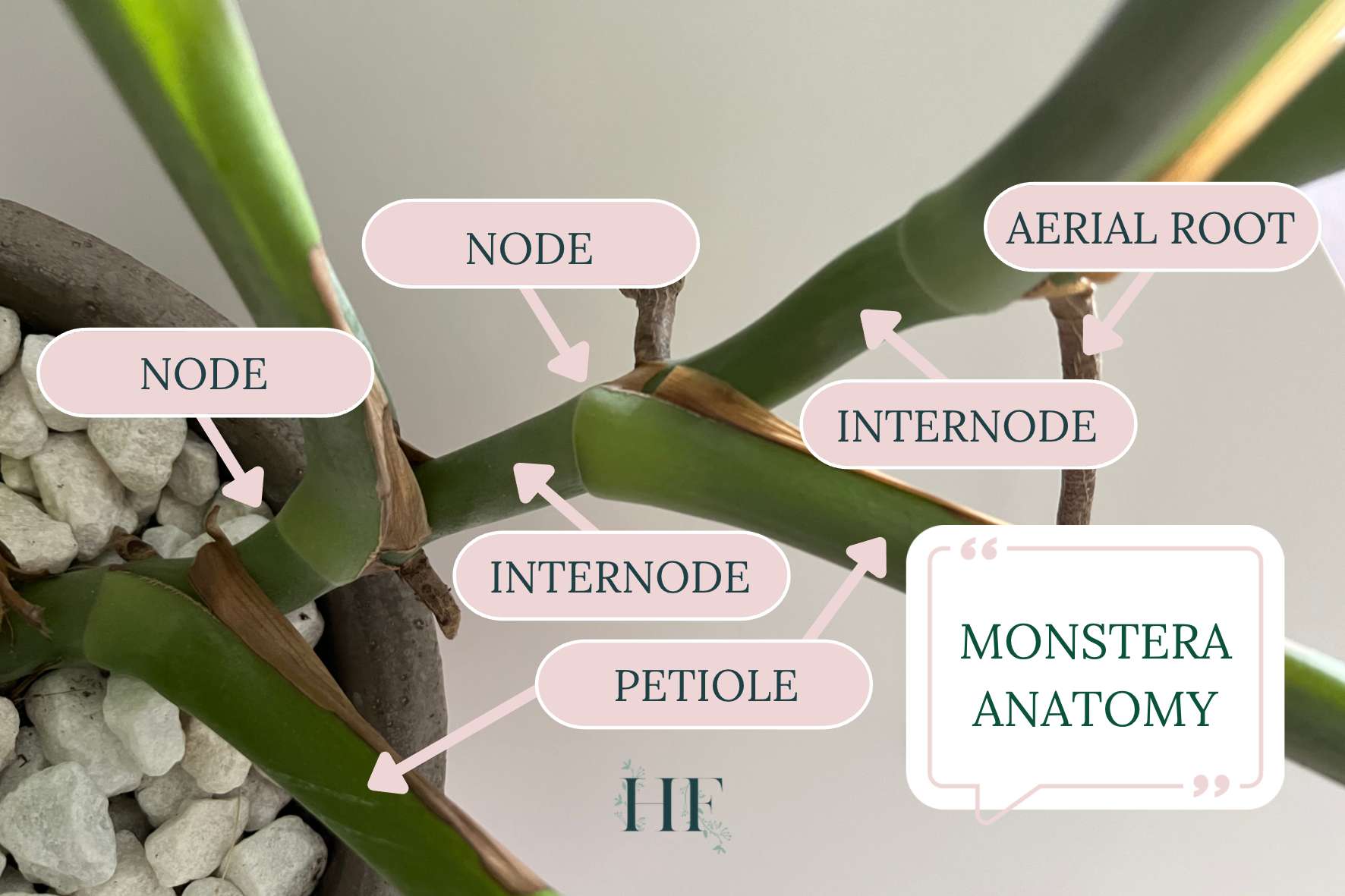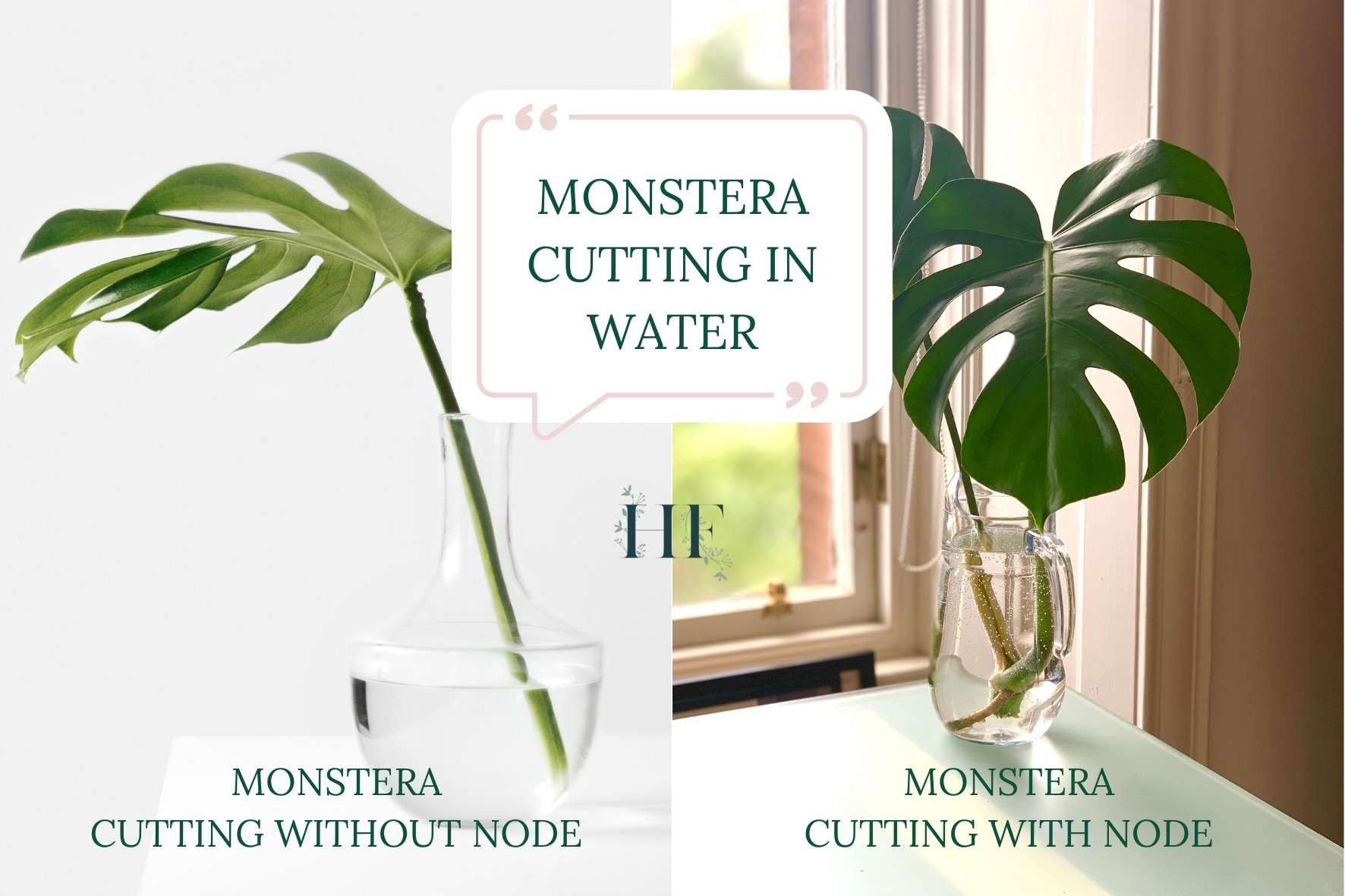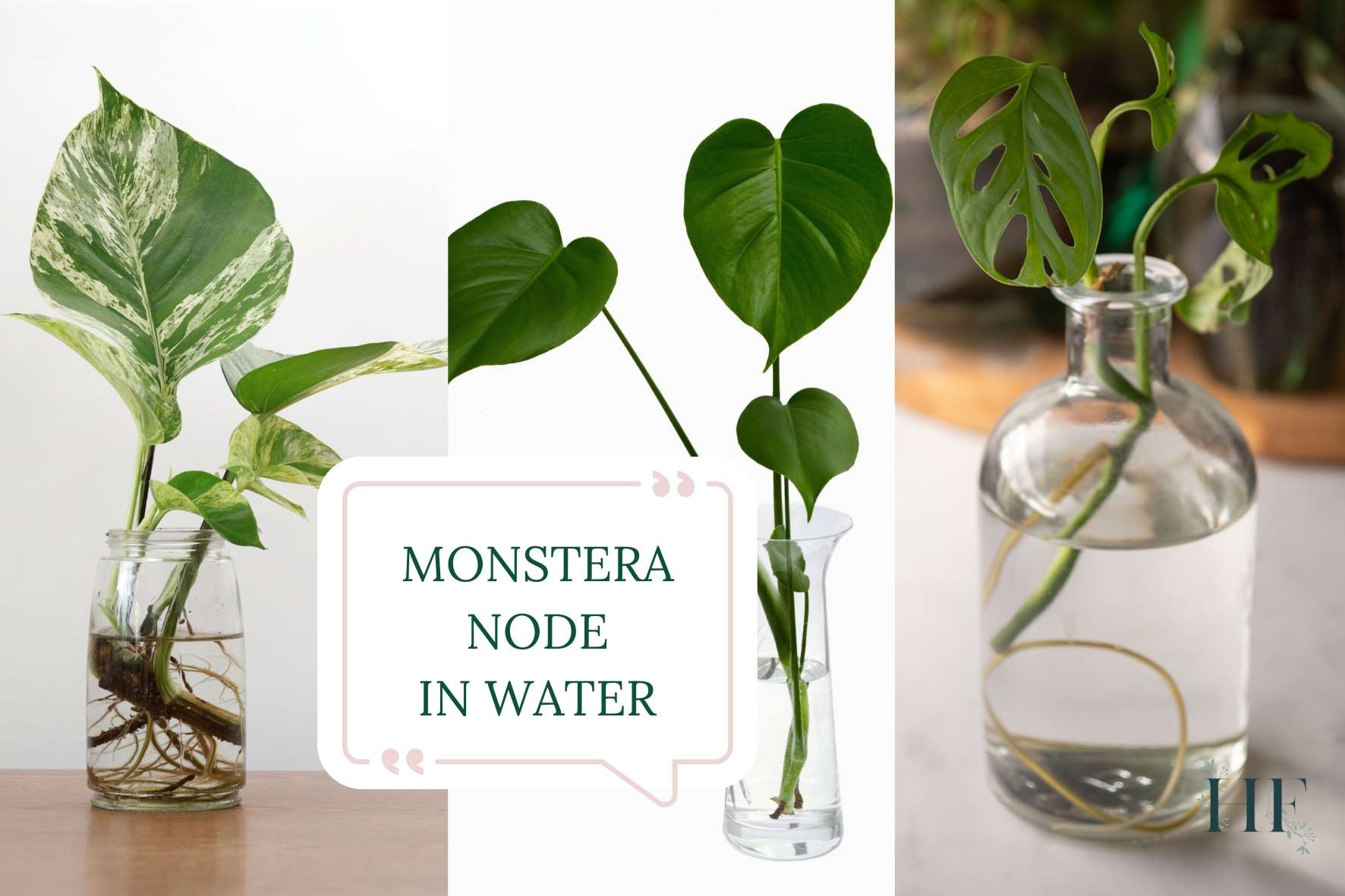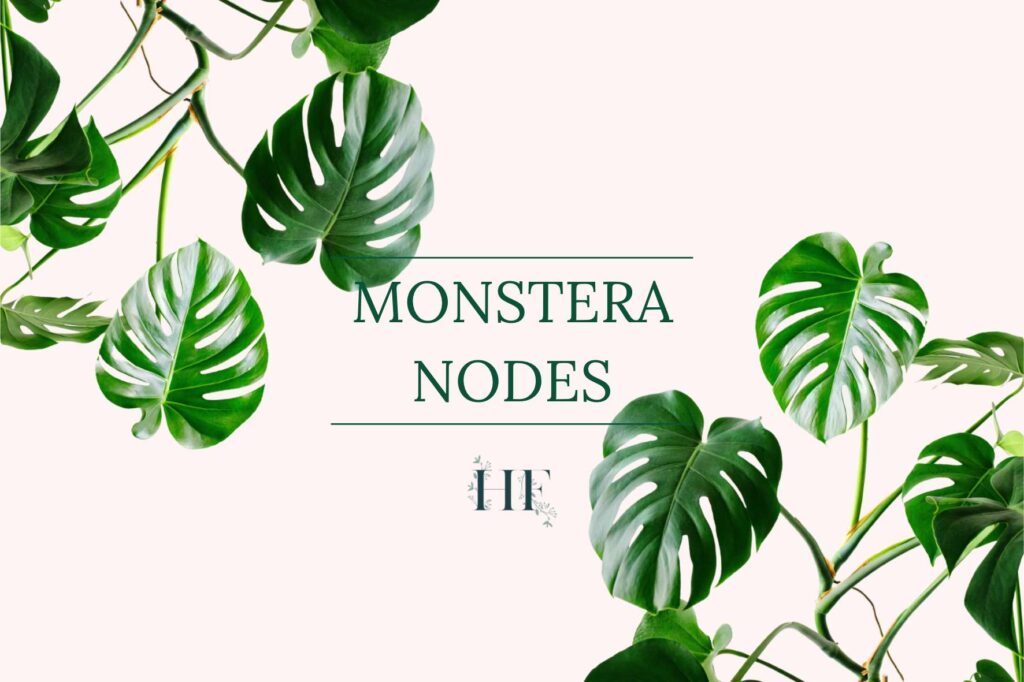If you are planning on propagating your Monstera or buying a cutting, you probably want to know what Monstera nodes are and how you propagate them.
In this blog post, I will explain exactly how to make sure you take a cutting with a node when you propagate Monsteras and even how to propagate a cutting with only a node and a stem.
Monstera Nodes FAQ
Understanding and being able to identify nodes is essential when you are pruning or propagating your Monstera plant.
What Is a Monstera Node?
The stem of any plant is made up of nodes and internodes.
The nodes are the parts where new growth can emerge from the stem (including leaves, branches, and aerial roots).
The internodes are simply the areas between the nodes, and their length varies from one species to another.
The node of a Monstera is the part of a plant where all new growth (leaves, stems, petioles, and aerial roots) originates. That’s why, when propagating a Monstera from a cutting, including a node is key to ensure that the cutting has the cluster of cells needed to grow into a new plant.
Each node has the potential to grow one leaf and multiple roots.
Monsteras tend to have a lot of nodes because they are vining plants – a vine is any plant with a growth habit of trailing or climbing stems, lianas or runners.
A monstera node is a growth point and it has an axillary bud (or lateral bud) between the petiole and stem, which is the dormant shoot of a new stem. The axillary bud can be visible as a round bump the same colour as the stem, or it can be inside the stem.

Where Is the Node of a Monstera?
The best way to identify a node is by location.
If there is (or was) a leaf or stem splitting off from the main stem, there will always be a node just below that growth.
Also, the area where the stems divide into two petioles or where the aerial roots are visible will always have a node.
What Do Monstera Nodes Look Like?
The appearance of a Monstera node can differ depending on how mature the stem is.
Monstera nodes are bulging, this part of the stem may be thicker than the internodes, and have light green circular rings, making them easy to identify from the rest of the stem.

Why Is My Monstera Growing Nodes?
A Monstera plant usually has many nodes because it is a vining plant that produces growth from many different locations on a single stem.
Since growth originates from its nodes, you can influence your Monstera’s growth by pruning or propagating.
If you want to encourage new growth from a specific area, you can prune above the node. This means leaving the node on the part of the stem that’s still attached to your plant.
However, if you want to create a new plant, you can propagate your Monstera from a cutting that has a node. You would cut a few inches below the node, keeping the node with the new cutting.
Why Doesn’t My Monstera Have a Node?
If a Monstera node is not growing, it is due to the plant’s age.
A young or juvenile Monstera plant might not have any nodes yet because it hasn’t grown enough.
For instance, if your Monstera’s leaves are growing straight out of the soil, your plant might not yet be mature enough to propagate with cuttings.
Does a Monstera Cutting Need a Node?
Propagating Monstera without a node is not possible since a Monstera cutting needs at least one node for propagation.
As you might have probably guessed by now…
Without the presence of a node, no new growth can originate.
Can You Propagate Monstera Without Node?
You cannot propagate a Monstera without a node because a Monstera cutting without a node cannot grow into a full plant since it needs a node for that. This means it will never produce new stems or leaves because all the cells needed for this growth development are located in the node.
A Monstera cutting without a node will only grow roots. It will start rooting in 2 to 3 weeks when kept in water.
Did you know? A Monstera leaf cutting can survive without a node. However, expect no new leaf growth.

Can I Propagate a Monstera Node Without Leaf?
As long as there is a node present, the Monstera plant will be able to turn into a full-size plant.
So, it’s possible to propagate a Monstera with a leafless node cutting and grow a new plant from it.
If you are shopping for a cutting, especially for a variegated variety like Monstera Albo and Monstera Thai Constellation, you will find sellers offering sections of a stem with just a single node (no leaves and few or no roots). They are sold under the names “stem cutting,” “node cutting,” and “wet sticks.”
In the case of Monstera Obliqua, Monstera Siltepecana and Monstera Acuminate, the reason to sell stem cuttings is that the plant sends leafless stolons or runners with nodes.
A Monstera node without leaf cutting tends to be 3 to 4 inches long, with a single node in the middle of the piece of the stem.
Usually, these Monstera wet sticks come packaged in moist sphagnum moss and are much easier to ship than a leaf cutting. Also, they are meant to be cheaper than buying a rooted Monstera or even a cutting with a leaf.
Did you know? Propagating a Monstera node without a leaf will take longer than a cutting that has one or more leaves and possibly an aerial root. This is because a leaf normally assists development by providing extra energy to the plant via photosynthesis. It could take at least a month for the new bud to extrude from the node.

Should I Buy a Monstera Stem Node?
It depends on several factors.
Here’s a guideline on how to choose a Monstera node cutting:
- Only buy from a trusted seller. You can check what other buyers are saying (reviews and ratings). The reason why is that since it doesn’t have a leaf, you cannot be sure about the species, cultivar, or variety that the vendor is selling.
- If you are buying a variegated Monstera, check for variegation streaks and markings on the stem node. However, this is not always the case, so you can never be completely sure if it will produce a variegated plant. When buying a leaf cutting, you can check the leaf for variegation signs.
- Look for a node cutting that already has at least a few inches of aerial root growing from it. This will let you know that it’s a healthy node that can generate new growth.
- Also, a rooted cutting will be a safer option (i.e. a stem cutting that already has roots).
- The stem cutting should not have any black or mushy spots that could indicate rot.
How Do You Know If You Have a Spent Node?
Last but not least, you’ll no doubt want to avoid the heartache of trying to propagate a Monstera with a node cutting, only to discover days or weeks later that there’s no hope of getting any growth out of that cutting… so let’s address spent nodes.
In the Monstera genus, a spent node is a plant cutting that has already experienced growth from its axillary bud and then had that growth cut off.
A viable axillary bud will appear fresh and green. Also, it may have even begun to sprout a new leaf growth.
Spent buds, however, typically have brownish ends, as if they have grown before and their growth has been cut off. As the axillary bud has already been used, future further growth from that plant is not possible.
Monstera plants only have one axillary bud per node. This means that each node only has one chance at producing new growth. When an axillary bud is spent, then you have a Monstera stem with a spent node.
Check out my Monstera propagation guide for more detail.

